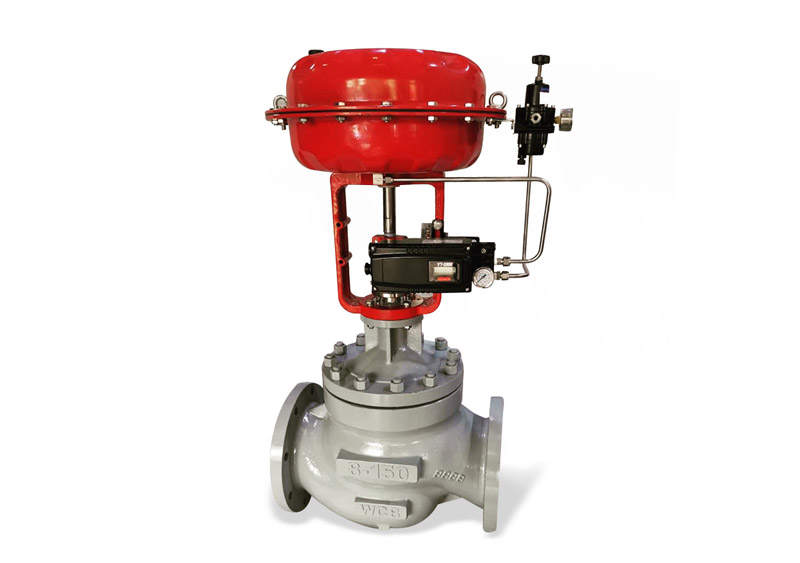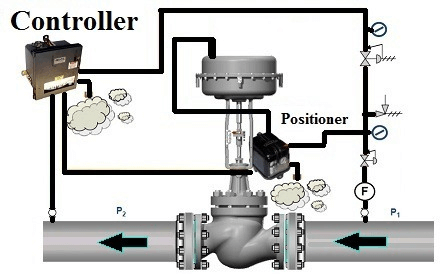Selecting the Right Control Valves: A Guide to Optimum System Efficiency
Selecting the Right Control Valves: A Guide to Optimum System Efficiency
Blog Article

Maximize Energy Financial Savings and Convenience With Advanced Building Automation Controls
In the world of contemporary architecture and center management, the assimilation of sophisticated structure automation manages stands as a critical innovation. By harnessing the power of automation, buildings can adjust, respond, and evolve in ways that were as soon as unthinkable.
Power Effectiveness Advantages
Energy effectiveness benefits can substantially lower power intake and functional expenses in structures. Energy-efficient systems, such as innovative structure automation controls, can maximize the usage of sources like air conditioning, lights, and heating, leading to reduced energy expenditures over time.
In addition, improved power performance can extend the lifespan of building tools and systems. By running a lot more efficiently, cooling and heating systems, light, and other building parts experience much less damage, resulting in minimized maintenance and replacement costs. Additionally, energy-efficient structures usually regulate higher home values and rental prices, providing long-term financial advantages to proprietors.
In addition, power efficiency can enhance owner comfort and productivity. Correctly controlled interior environments with ideal lighting and thermal problems produce an even more enjoyable and helpful workspace, bring about improved staff member fulfillment and efficiency. Generally, the energy performance advantages connected with advanced building automation controls are multifaceted, incorporating cost financial savings, ecological stewardship, and resident wellness.
Enhanced Convenience Control
Enhancing comfort control in building environments requires a sophisticated assimilation of innovative automation systems for optimum owner well-being. By utilizing innovative structure automation controls, facilities can customize the indoor environment to satisfy the certain demands and choices of occupants. These systems allow accurate law of lighting, ventilation, and temperature, creating a efficient and comfortable ambience. Resident contentment and performance are carefully connected to thermal convenience, making it necessary to have systems in position that can adjust to transforming problems in real-time.
By incorporating these sophisticated controls, structures can not only enhance convenience yet also boost power performance by optimizing system procedures based on actual tenancy and usage patterns. Ultimately, focusing on passenger convenience through sophisticated automation systems leads to a much more pleasurable and healthier indoor setting.
Operational Efficiency Improvements

Moreover, the execution of real-time tracking and analytics tools enables building drivers to recognize energy inadequacies and functional abnormalities promptly. By constantly keeping an eye on energy usage patterns and system performance metrics, adjustments can be made in real-time to enhance power consumption and make sure peak operational performance. control valves. Additionally, incorporating need response methods right into structure automation controls can better enhance operational performance by dynamically readjusting power use based upon grid problems and rates signals
Indoor Climate Optimization
Reliable interior environment optimization is an essential element of structure automation controls, ensuring occupants' comfort and wellness while making best use of power cost savings. find more info By utilizing innovative sensing units and controls, constructing automation systems can constantly monitor and change temperature, humidity levels, air high quality, and air flow to develop an optimum indoor environment. Maintaining regular and comfy conditions not just boosts passenger contentment but likewise increases performance and overall well-being.
Indoor environment optimization additionally plays a vital role in energy effectiveness. By fine-tuning air flow, heating, and air conditioning systems based upon real-time data and occupancy patterns, constructing automation controls can dramatically lower power usage - control valves. As an example, carrying out strategies such as demand-controlled ventilation and thermal zoning can assist reduce power waste while making certain that each area of the building receives the needed conditioning.

Sustainable Environment Creation
Building automation regulates not just maximize indoor environment problems for power performance and owner convenience but likewise lay the foundation for developing a sustainable atmosphere check my blog with critical management of systems and resources. By integrating advanced building automation innovations, such as sensors, actuators, and intelligent software, centers can change and keep track of energy use in real-time to lessen waste and lower their carbon footprint. These systems make it possible for anticipating maintenance, identifying potential concerns before they intensify and optimizing tools performance to enhance longevity and performance.
Additionally, sustainable setting development extends beyond energy administration to incorporate water conservation, waste decrease, and interior air quality renovation. Building automation controls can regulate water usage, detect leaks, and make sure appropriate garbage disposal practices, contributing to overall sustainability efforts. In addition, by keeping an eye on and managing air flow and filtering systems, these modern technologies improve passenger health and productivity while reducing energy intake connected with a/c procedures.
Conclusion
To conclude, advanced building automation controls deal considerable benefits in regards to power cost savings, convenience control, operational effectiveness, indoor climate optimization, and producing a sustainable environment. By applying these controls, structures can accomplish ideal efficiency while reducing energy consumption and improving occupant convenience. It is obvious that making use of innovative automation technology is essential in improving building efficiency and developing an extra sustainable future.
Energy effectiveness advantages can substantially minimize power consumption and operational prices in buildings. Generally, the go to these guys power performance advantages linked with advanced structure automation controls are diverse, encompassing expense financial savings, ecological stewardship, and passenger well-being.
In addition, integrating need reaction methods right into building automation controls can even more improve functional efficiency by dynamically changing power usage based on grid problems and rates signals.
Structure automation manages not just maximize interior climate problems for power performance and resident convenience yet also lay the foundation for developing a sustainable setting via critical management of systems and sources.In conclusion, advanced structure automation manages offer considerable benefits in terms of energy financial savings, convenience control, functional efficiency, interior environment optimization, and producing a lasting atmosphere.
Report this page